VALLETTA (PART II)
Let’s take a last stroll through Valletta before we move on to the rest of this beautiful island.

On many days, while visiting Valletta, we could see huge cruise ships docking in the Grand Harbour of Valletta. Passengers always had a steep climb of about 20 minutes to the city center, but an elevator had been built in the meantime which enable passengers an easy ride up to the old town.



A symbol that is very familiar in Malta (probably worldwide), is the Maltese cross. This cross is most commonly associated with the Knights of Malta who have ruled the Maltese islands between 1530 – 1798. We saw the Maltese cross on street names, buildings, jewellery and even on their Euro coins.
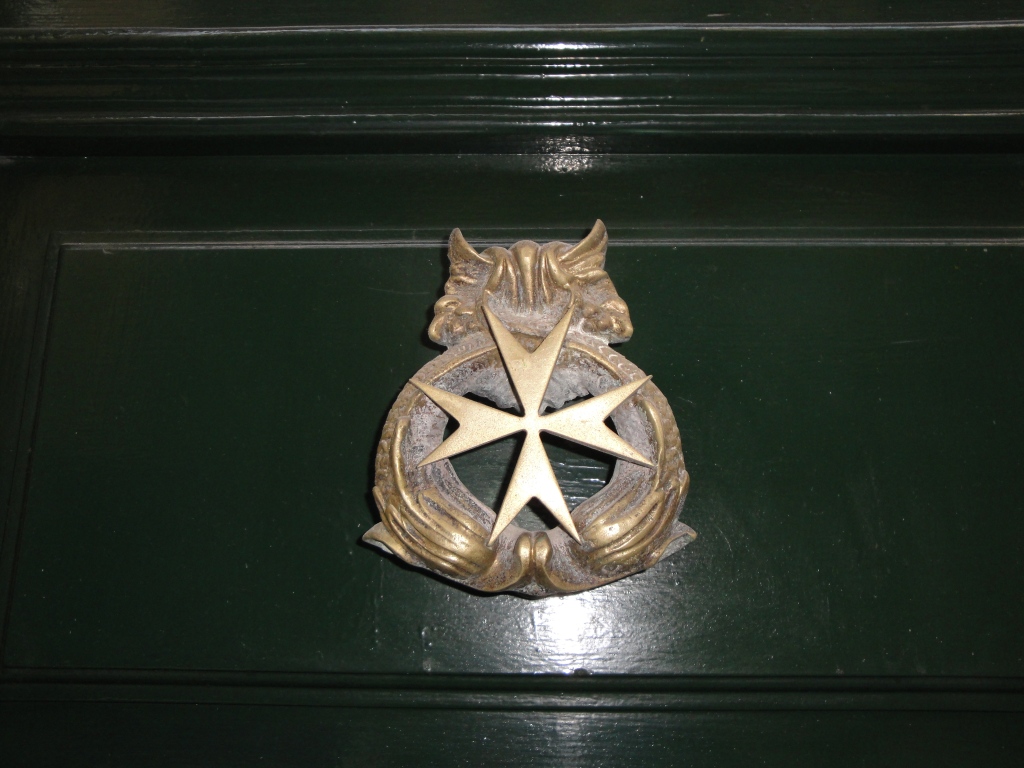
As mentioned in our previous post, there are many monuments in Valletta – actually, on almost every corner of Valletta there is some kind of statue or monument.
Here are just a few:



There are many open-air cafés to be found in Valletta, but it was the small restaurants that almost disappeared under ground, that got our attention.

Palace of the Grand Masters:
By Maltese standards, the Palace of the Grand Masters is an enormous building. Only a small part of it is open to the public, as the rest belongs to the parliament.
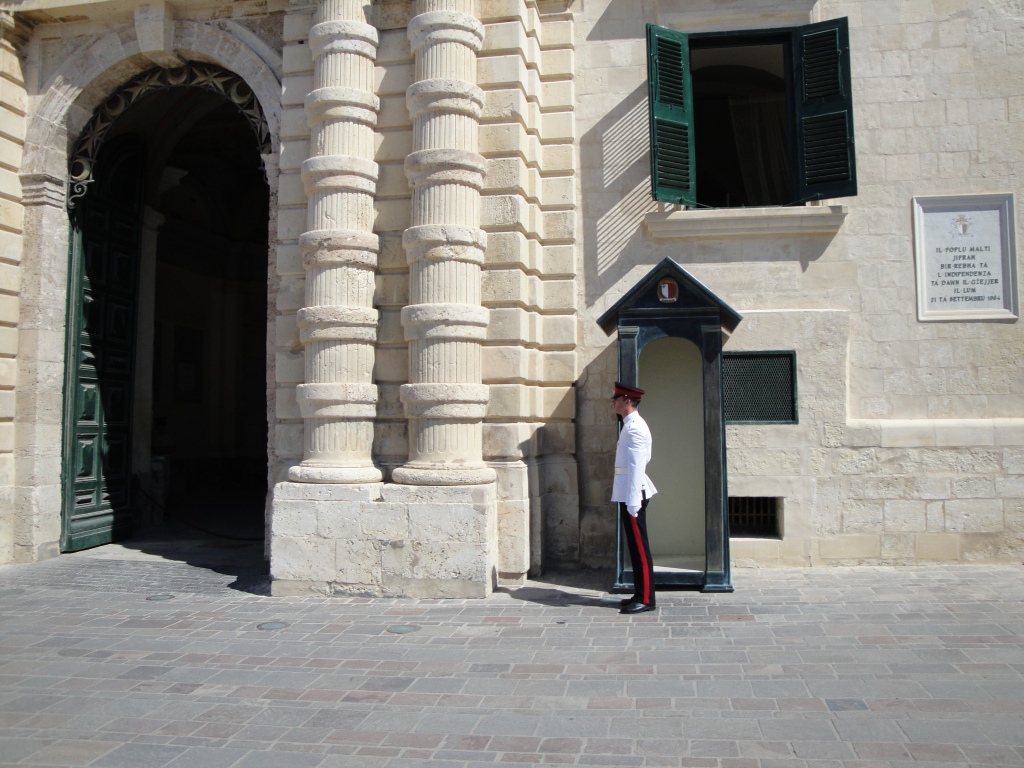
We entered the Palace through the corridor that was leading to what was formerly the Armoury – a fascinating reminder of the period when the Knights of Malta lead the battlefields.

The British connection are well-represented in the State Dining Room by several royal portraits, like King George IV and Queen Elizabeth II.


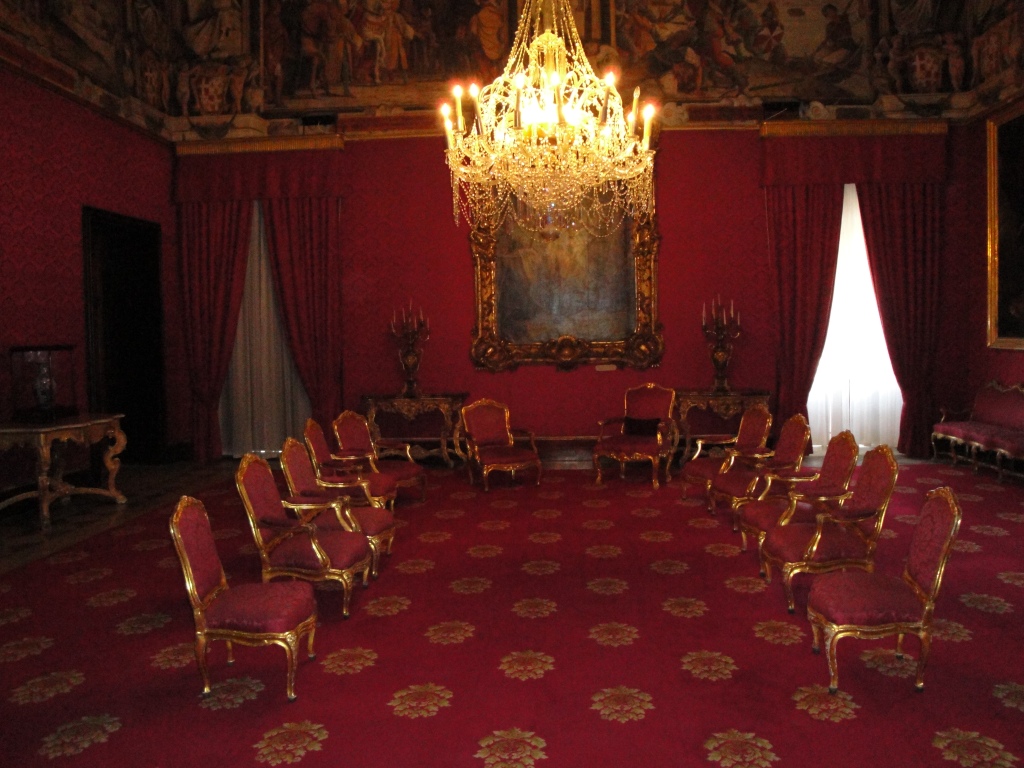
The palace encloses two greenery-adorned courtyards. The larger of the two is called the Neptune Court (with its bronze statue of Neptune), while the smaller one is named Prince Alfred Court.

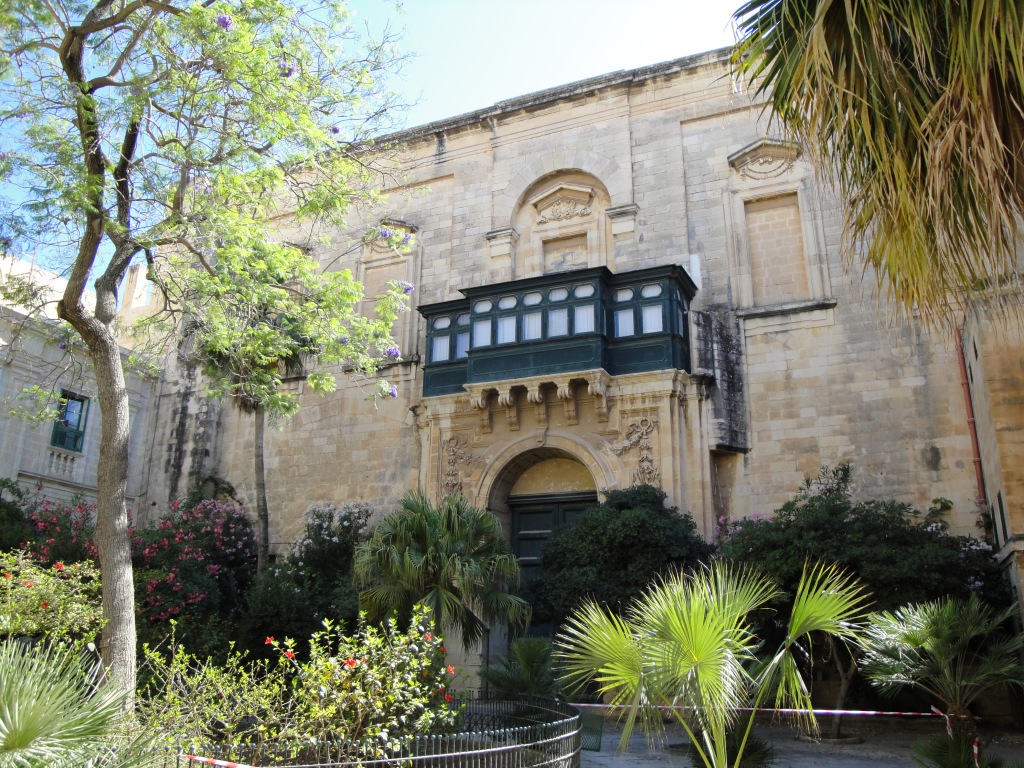
The Palace Armoury:
One of the world’s most significant and impressive permanent exhibitions of pre-18th century weaponry and armour is found in two halls within the palace precincts.

There are extensive exhibits of historic suits of armour – the fine collection of weaponry and armour may round up to 6000 pieces. Here are just a few photos we took inside the Palace Armoury:
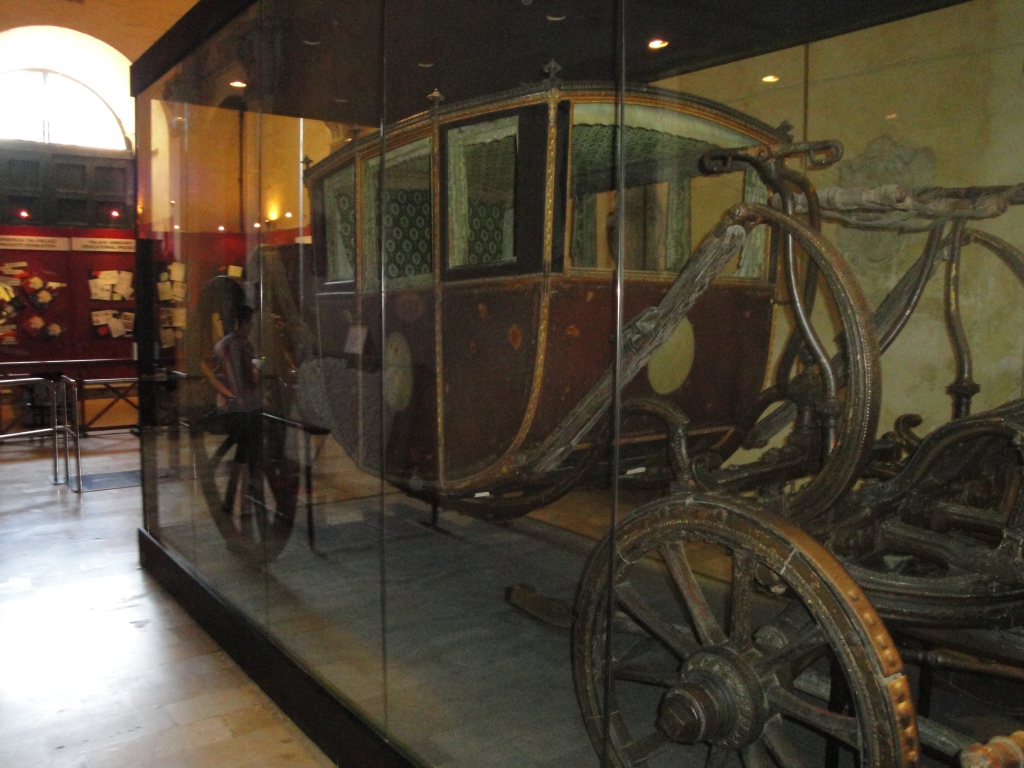


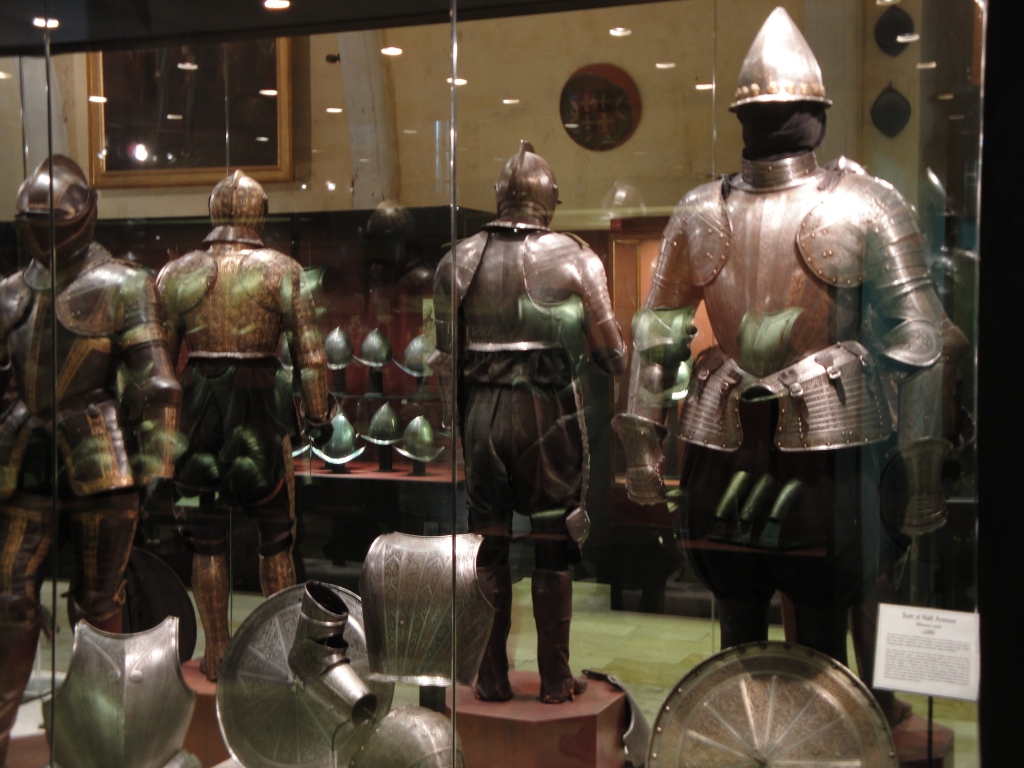



A traditional Maltese evening:
During one of our several visits to Valletta, we noticed a guy on Republic Street playing his mandolin and singing beautiful Maltese songs. While buying one of Benny Grima’s CDs, we were invited to attend a typical Maltese Folklore evening … with folklore music and traditional Maltese food – of course we accepted the invitation.



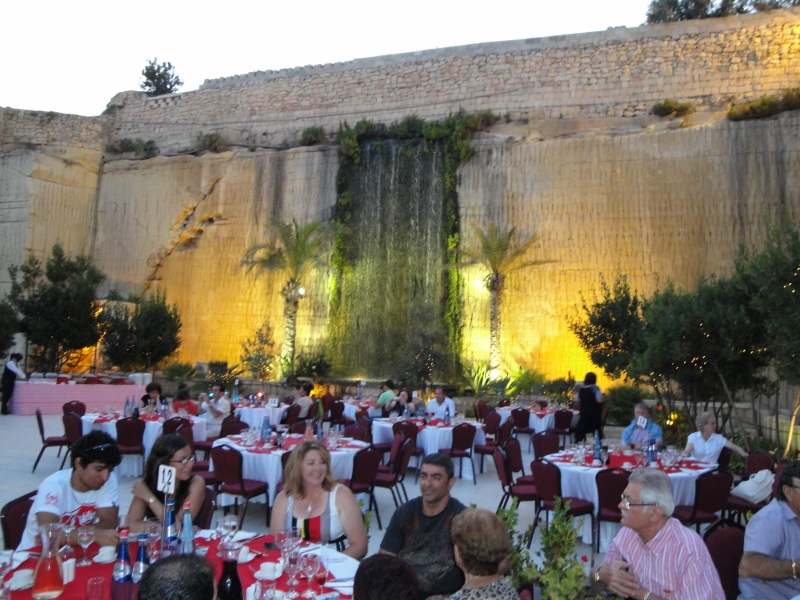

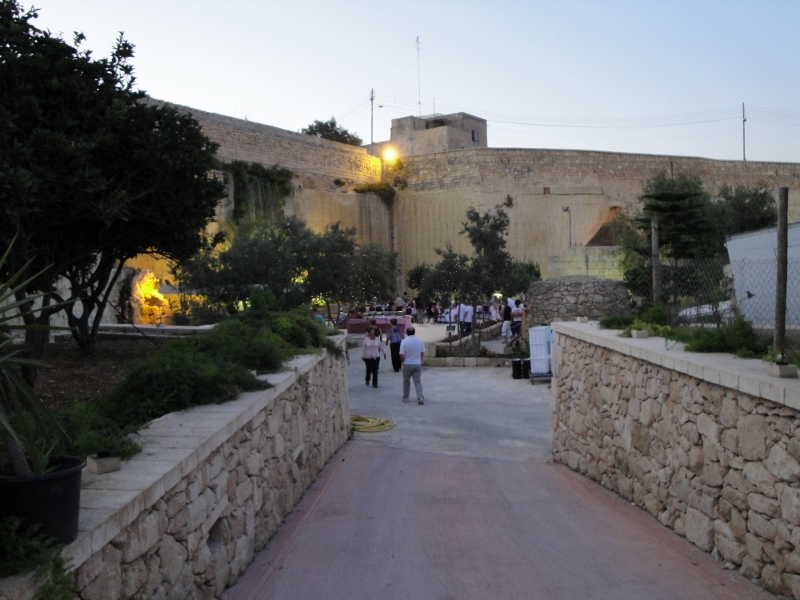
We were fortunate to have a table right in front of the stage and it was great listening to Benny and his wife Tonia singing all the beautiful Maltese songs and enjoying the folklore dances.


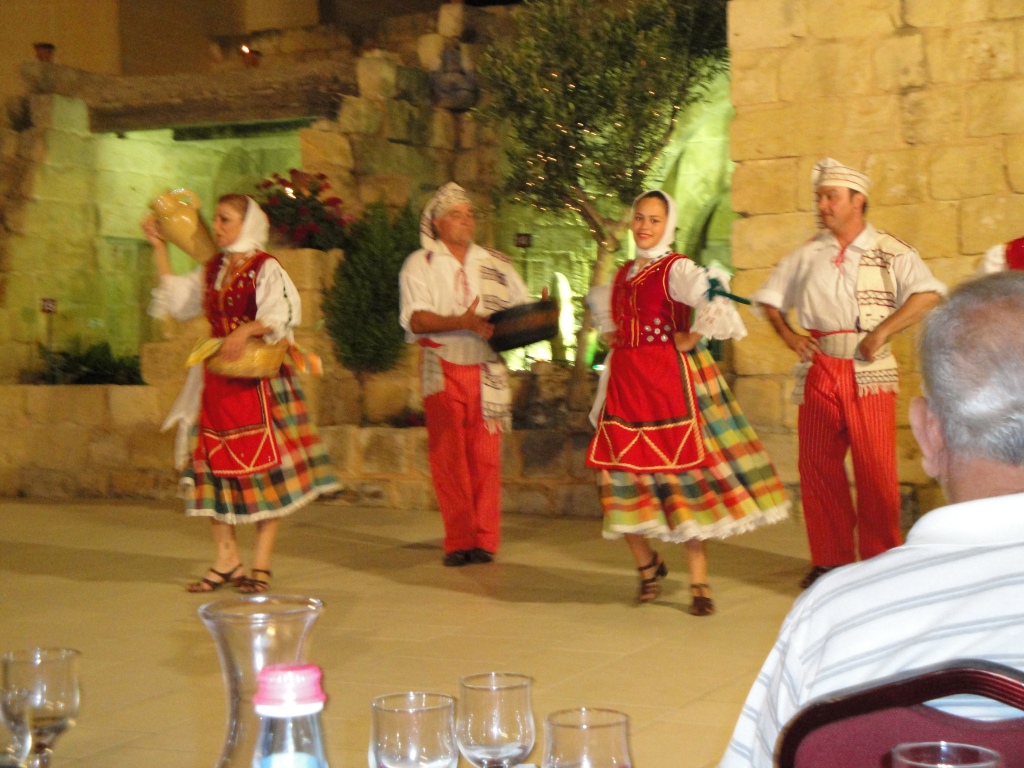

While the performers were on stage, we had one of the best plates of Maltese food we tasted while visiting Malta! Stone-baked Maltese bread, olives, cheese and of course pastizzi to just name a few.

We shared our table with Maltese people – some of them emigrated to Australia, but were on a visit to family in Malta. They made an effort to welcome us in their midst and excitingly explained their tradition, like their language, food and music.

For now, it’s goodbye to Valletta!
This the last of our Valletta posts, but in the next one about our Malta visits, we will bring the beautiful Three Cities to you … make sure not to miss it!
We have done these trips in 2011 & 2013

Wow the palace and palace armory looks incredible…. I love the idea of enjoying the cultural side of people too.
LikeLiked by 3 people
Absolutely – we love to interact with the local people where possible … you learn more from them than from pamphlets and Google 😉.
LikeLiked by 1 person
🌷👍
LikeLiked by 2 people
Those restaurant walls are incredible!!! Your posts are making me want to go back! 🙂
LikeLiked by 3 people
Haha, we’ll meet you there … 😉
LikeLiked by 1 person
I love your photo down the street from higher up, that gives a really different view.
And that Mediterranean Yumminess…!
LikeLiked by 3 people
Thank you! Yes, we’ve only realised afterwards that the photo was actually from an “unusual” angle … and we loved it! Ahh, the food of Malta … such flavourful dishes 😋.
LikeLiked by 2 people
I’ve not been inside the armoury and palace so it was interesting to read about them in your post. Loved the restaurant down in the cellar too!
LikeLiked by 1 person
It was really nice to visit these two places – my husband especially loving his time in the armoury 😉. Yes Marion, that restaurant was such a surprise to find.
Thanks for reading and have a great weekend.
LikeLiked by 1 person
More beauty, Corna, thanks for sharing! 🌞
LikeLiked by 1 person
Thanks Lisa 🌷 … enjoy your weekend.
LikeLiked by 1 person
You too, my friend! 🌞
LikeLiked by 1 person
You are so fortunate to be able to see all these beautiful places. Thank you for taking us along with you!
LikeLiked by 1 person
Thanks Diane, yes that’s true – now that we are thinking back, we realised how fortunate we were to visit this beautiful island. Glad you took a walk with us and thanks for commenting 💌.
LikeLike
What a great idea to use a disused quarry in that way! The palace looks beautiful too, although I’m not so interested in armour. Give me those wonderful old street signs any day!!
LikeLiked by 1 person
I’m with you on the armour Sarah … you know how it is, sometimes you need to compensate 😊.
LikeLiked by 1 person
What beautiful architecture and cute streets. I love the restaurant! Thanks for the tour 🙂 Maggie
LikeLiked by 1 person
We loved that restaurant so much, we had to go back there and have lunch! Thanks for reading and commenting 😊.
LikeLiked by 1 person
What a great post. Malta is on our radar once we are based in Spain. Great info!
LikeLiked by 1 person
Thanks guys! Yes, don’t miss Malta – it’s an amazing island packed with lots of history and beauty (but also, enjoy Spain 👍🏻).
LikeLike
Love those underground restaurants! It almost as if you’re part of a secret! Also that policeman seems to friendly and relaxed😅
LikeLiked by 1 person
That underground restaurant was a real gem – so glad we’ve found it! Yes, the policeman was not really bothered by us taking a photo of him and even waved as we’ve walk away … 😄
LikeLiked by 1 person
We were there a couple of years ago. Very historic and beautiful country ❤
LikeLiked by 1 person
Yes Anita, it’s such a beautiful island … great that you also had the chance of visiting Malta! We would love to go back and soak up the Mediterranean sun 🌞.
LikeLike
I haven’t been to Malta but it looks gorgeous and the food looks delicious.
Not sure about that huge cruise ship though…happy to hear they’ve been stopped in Venice. 😉
LikeLiked by 1 person
We loved our visits to Malta – the combination of their history, beauty (and yes, their delicious food) made this one of our favourite holidays!
LikeLiked by 1 person